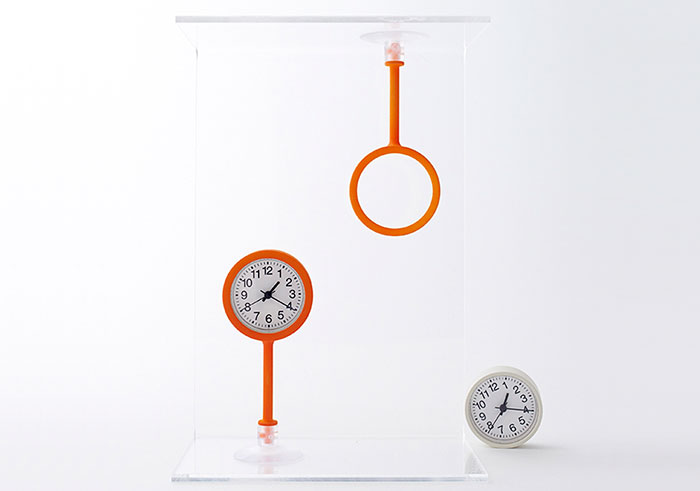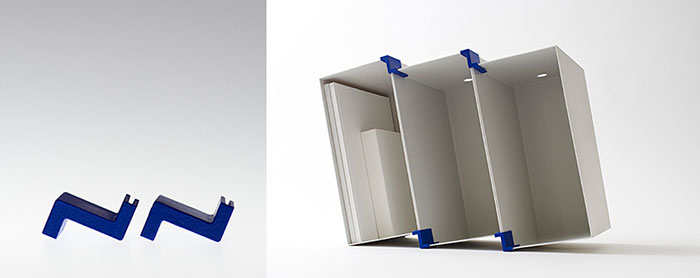Some folks will complain about the unfinished, monochromatic aesthetic of objects made by many desktop 3D printers. With a little creativity, however, this aesthetic can be used to its advantage. TAKT Project, a Japanese design agency, has transformed ordinary objects into genius designs using small, 3D-printed widgets.

TAKT, which has worked with such big names as MUJI and Sony, has developed what they call 3-PRING Product. 3-PRING combines the DIY attitude of the growing Maker movement with the mass-produced aesthetic of industrial design. By applying 3D-printed parts to goods manufactured by MUJI, 3-PRING reinvents the sorts of things you might find at IKEA by turning them into novel DIY projects. Check out the brilliant table they made below by placing a piece of honeycomb cardboard atop four chairs outfitted with 3D printed components.
Or this ceiling lamp formed by combining a plastic basket, an LED light, and a 3D printed attachment.
The project’s website describes itself as akin to music sampling: “Just like ‘sampling techniques’ in the music industry which create new tracks by quoting a track or sound in the past, we can create original products by quoting a ready-made product, and adding pieces made by a 3D printer.” Grand Master Flash would be very proud of this stacked storage unit:
TAKT presented 3-PRING at the Shibuya MOV lounge last month and are still determining whether or not to release their files to the public. I’m not sure if MUJI products are similar enough to IKEA goods for 3-PRING files to translate to other parts of the world, but, with a bit of tweaking, you might be able to turn some plastic bins into a functional table:
Source: Spoon & Tamago






